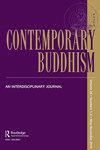BUDDHIST EMPIRICAL REALISM AND THE CONDUCT OF ARMED CONFLICT
IF 0.1
3区 哲学
0 PHILOSOPHY
引用次数: 1
Abstract
ABSTRACT This article argues, through examples drawn mainly from the Sutta Piṭaka, that the Pali texts are characterised by an empirical realism that avoids neither the grim realities of conflict nor the underlying forces that drive it. Suttas such as the Cakkavatti-sīhanāda Sutta and the Mahā-dukkha-kkhanda Sutta are obvious examples of this realism. So also is the Aṅgulimāla Sutta, which deals with the phenomenon of a serial killer. Other texts examine causation, the Mahā-nidāna Sutta, for instance, which applies Buddhist causation theories to conflict and other forms of disruption in society. All focus on the almost intractable nature of conflict, when greed, hatred and delusion are embodied within human cultures and communities, producing diverse constructions of reality, fed by papañca, proliferating thought. I will argue that the empirical realism shown by texts such as the above can throw light on some of the bitter contexts of armed conflict that Buddhists are caught up in within the contemporary world, as combatants, humanitarian workers or members of civilian communities. They point to the difficulties that can arise, for instance, when humanitarian workers seek to enter zones of armed conflict to protect civilians and to encourage compliance with international humanitarian law (IHL) as set out in customary law and treaties such as the Geneva Conventions and its Additional Protocols. The strength of the diverse constructions of reality present can mean that IHL, and also the demands of compassion, are subordinated to other concerns. This article therefore argues that Buddhism offers not only tools for effective compliance with IHL within situations of armed conflict, but also an analytical model for understanding why some contexts of armed conflict are resistant to the principles embodied in this law. It also suggests a primary initial role for external authorities in guarding against IHL abuses, before armed services personnel can cultivate mindful inner discipline in line with Buddhist ideals.佛教经验现实主义和武装冲突的行为
本文通过主要从《经》Piṭaka中提取的例子来论证,巴利文本具有经验现实主义的特点,既避免了冲突的残酷现实,也避免了推动冲突的潜在力量。如Cakkavatti-sīhanāda经和Mahā-dukkha-kkhanda经就是这种现实主义的明显例子。关于连环杀手现象的Aṅgulimāla经也是如此。其他的文本研究因果关系,例如Mahā-nidāna经,它将佛教的因果理论应用于冲突和其他形式的社会破坏。当贪婪、仇恨和妄想体现在人类文化和社会中,产生了对现实的不同建构,并由papañca和扩散的思想滋养时,所有这些都集中在冲突几乎难以解决的本质上。我想说的是,上述文本所显示的经验现实主义可以揭示佛教徒在当代世界中作为战斗人员、人道主义工作者或平民社区成员所陷入的武装冲突的一些痛苦背景。他们指出,例如,当人道主义工作人员寻求进入武装冲突地区保护平民和鼓励遵守习惯法和《日内瓦公约》及其《附加议定书》等条约所规定的国际人道主义法时,可能会出现困难。目前对现实的各种建构的力量可能意味着,国际人道法以及对同情的要求都要服从于其他关切。因此,本文认为,佛教不仅提供了在武装冲突情况下有效遵守国际人道法的工具,而且还提供了一种分析模型,用于理解为何某些武装冲突情境会抵触该法所体现的原则。它还表明,在武装部队人员能够培养符合佛教理想的有意识的内部纪律之前,外部当局在防范违反国际人道法方面应首先发挥主要作用。
本文章由计算机程序翻译,如有差异,请以英文原文为准。
求助全文
约1分钟内获得全文
求助全文

 求助内容:
求助内容: 应助结果提醒方式:
应助结果提醒方式:


